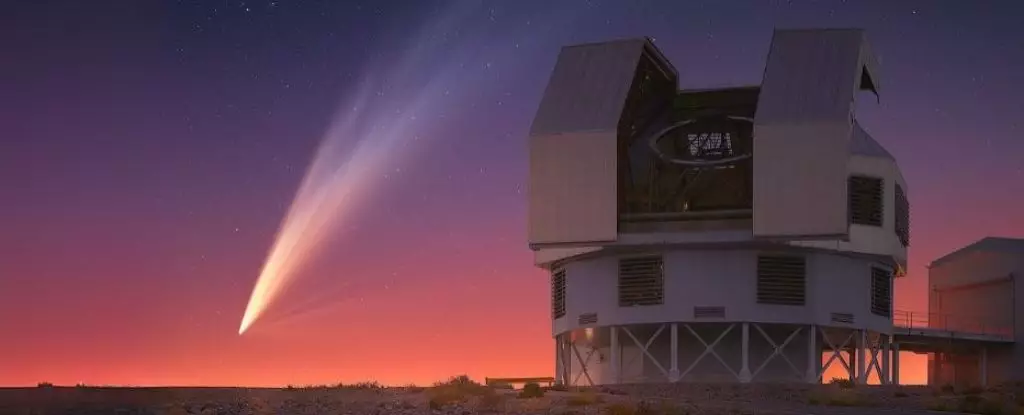Comets have long inspired awe and fascination among astronomers and casual stargazers alike. The unpredictability of their brightness and behavior often transforms them into subjects of both inquiry and anticipation. As we turn our gaze to the latest entry in the pantheon of these icy travelers, Comet C/2024 G3 ATLAS, we encounter a narrative woven with both hope and uncertainty.
Comet G3 ATLAS was first discovered on April 25, 2024, by the Asteroid Terrestrial-impact Last Alert System (ATLAS) survey, which has made significant contributions to planetary defense by monitoring near-Earth objects. Initial observations suggested that this comet might prove to be a standout performer, lighting up the night sky during its perihelion in January 2025. However, history has shown us that appearances can be deceiving. Numerous notable comets, like C/2012 S1 ISON, have captured public attention only to disappoint upon closer inspection.
Conversely, some comets surprise us with their resilience, such as W3 Lovejoy, which emerged triumphant from a perilously close encounter with the Sun. G3 ATLAS was set to undergo a similar close pass, reaching a perihelion just 14 million kilometers from our star. The anticipation surrounding this event was palpable as astronomers and enthusiasts alike eagerly awaited the comet’s performance.
As the comet approached perihelion on January 13, 2025, it achieved a brightness of -3.8 magnitude, marking it as the most brilliant comet since P1 McNaught graced our skies in 2007. Observations from the Solar and Heliospheric Observatory’s LASCO C3 imager captured G3 ATLAS in all its glory. The comet unfurled an impressive dust tail that sent observers into a frenzy. Unfortunately, it appeared more favorable from the southern hemisphere, as northern viewers struggled to witness its full splendor. This phenomenon often occurs with comets, which seem to prefer southern vistas.
Astrophotographers in the northern regions managed to capture glimpses of the comet, but these sightings were sporadic and often fell victim to less-than-ideal conditions. Despite this, the striking phenomenon of the comet’s tail—a result of solar wind pushing dust and ions away—reminded us of the intricate dance between celestial entities and the solar environment.
Following its closest approach to the Sun, the anticipated decline in brightness began to set in for G3 ATLAS. Images captured around January 18 revealed a troubling trend. The comet, once radiant with promise, now resembled a “headless comet,” its nucleus deteriorating while its bright tail persisted. This peculiar transformation showcases the volatile nature of these wanderers; their fates can shift dramatically in a matter of days, leaving both observers and researchers perplexed.
As G3 ATLAS continued to dim, it was poignant to witness the striking patterns of its remaining tail, which developed a unique striped appearance. This demonstrates how even in decline, comets can captivate with their ethereal beauty. As of now, G3 ATLAS is estimated to shine at +5 magnitude within the constellation Piscis Austrinus—a stark contrast to its earlier brilliance.
Perhaps most intriguing is the orbital journey of Comet G3 ATLAS. Estimates indicate that its inbound orbit might last 160,000 years, while the outbound passage could extend to a staggering 600,000 years. This long-scale timeline serves as a reminder of our temporary, fleeting glimpses of these majestic celestial bodies; they will eventually return, but likely long after our time on Earth is over.
As we reflect on Comet G3 ATLAS, we are reminded of the captivating uncertainty inherent in skywatching. While this particular comet may not have lived up to the full excitement of its promise, it still offers valuable data for scientists and sparks joy in the hearts of enthusiasts. We continue to look skyward, hoping for future celestial wonders that remind us of the beauty and unpredictability that surrounds us in the cosmos.


Leave a Reply